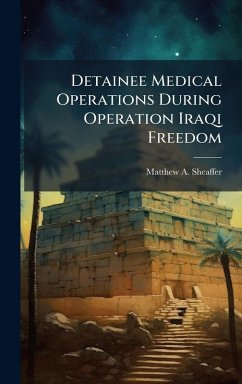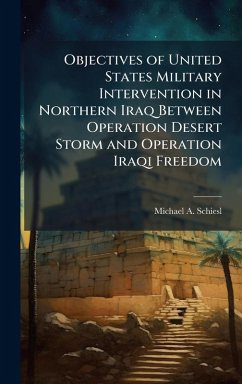
Full Spectrum Operations
Versandkostenfrei!
Versandfertig in über 4 Wochen
28,99 €
inkl. MwSt.
Weitere Ausgaben:

PAYBACK Punkte
14 °P sammeln!
Ongoing operations in Iraq and Afghanistan have underscored the necessity of conventional military forces to adequately prepare for stability and reconstruction operations (SRO) in the aftermath of major combat operations (MCO). In the case of Iraq, there existed a narrow window of opportunity, perhaps ninety days long, following the removal of Saddam Hussein's regime. The window of opportunity presented the United States (U.S.) and coalition forces the possibility to immediately seize upon the goodwill of the newly emancipated Iraqi people, their democratic euphoria, and a generally permissiv...
Ongoing operations in Iraq and Afghanistan have underscored the necessity of conventional military forces to adequately prepare for stability and reconstruction operations (SRO) in the aftermath of major combat operations (MCO). In the case of Iraq, there existed a narrow window of opportunity, perhaps ninety days long, following the removal of Saddam Hussein's regime. The window of opportunity presented the United States (U.S.) and coalition forces the possibility to immediately seize upon the goodwill of the newly emancipated Iraqi people, their democratic euphoria, and a generally permissive environment to set the conditions for successful SRO. The ability to rapidly transition from MCO to SRO is of vital importance, as it affords a unique opportunity for an occupying force to destroy an insurgency in its most vulnerable stage, its infancy. Unfortunately, the U.S. and coalition forces in Iraq were unable to exploit their initial success in MCO and now battle a full-scale insurgency, the outcome of which remains very much undecided. U.S. Army operations in the latter half of the 20th Century and the outset of the current century have almost always necessitated the need for the ability of the U.S. armed forces to rapidly conduct the transition from MCO to SRO. The current operational environment (COE) and future threat assessments prove that this requirement will not dissipate. This monograph strives to determine the additional resources, training, and authority required by a U.S. Army division to successfully transition from MCO to SRO. The thesis investigates the experiences of three higher echelon headquarters, operating at the tactical level of war, required to make the transition. XVIII Airborne Corps during Operation Just Cause, 10th Mountain Division during Operation Uphold Democracy, and the 3rd Infantry Division during Operation Iraqi Freedom. The experiences of the three headquarters are contrasted with one another through an analysis of their actions wi This work has been selected by scholars as being culturally important, and is part of the knowledge base of civilization as we know it. This work was reproduced from the original artifact, and remains as true to the original work as possible. Therefore, you will see the original copyright references, library stamps (as most of these works have been housed in our most important libraries around the world), and other notations in the work. This work is in the public domain in the United States of America, and possibly other nations. Within the United States, you may freely copy and distribute this work, as no entity (individual or corporate) has a copyright on the body of the work. As a reproduction of a historical artifact, this work may contain missing or blurred pages, poor pictures, errant marks, etc. Scholars believe, and we concur, that this work is important enough to be preserved, reproduced, and made generally available to the public. We appreciate your support of the preservation process, and thank you for being an important part of keeping this knowledge alive and relevant.












